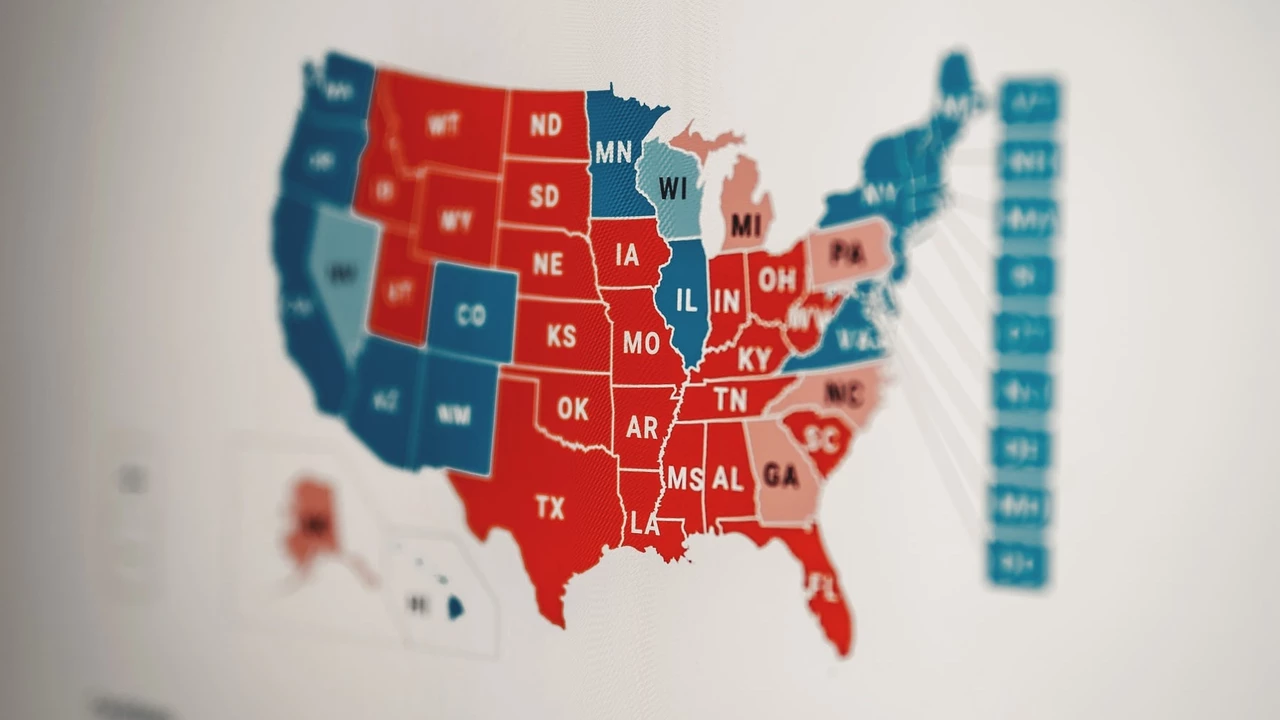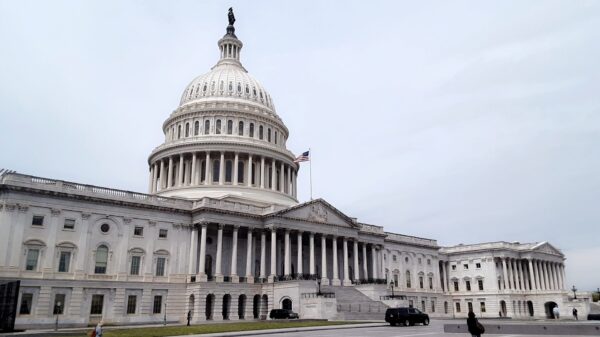Boston Political Review writer Moxie Thompson on the controversial US Electoral College.
As election season dies down and tempers start to even with the nearing arrival of a new president, a debate remains alive and well in US politics; a foundational issue many feel needs amending and a historical attestation of the institution which got us here: the Electoral College.
The Electoral College is the group of electors who meet every four years to choose the president of the United States. Each state is apportioned the same number of electors as its number of members in the House of Representatives and Senate, along with three District of Columbia representatives, conglomerated to form an academy of 538 electors with the sole purpose of choosing the next commander-in-chief. Federal officeholders cannot serve as electors.
The history of the Electoral College originates from the very founding of the US. According to the National Archives, the Electoral College was made to be a “compromise between the election of the President by a vote in Congress and the election of the President by a popular vote of qualified citizensâ€. It instituted that qualified electors would be chosen by the people and would then vote for the president on their behalf.
This method was enacted to avoid potential tyranny by instilling a college of elected scholars to vote for the president. Officials at the time felt that most citizens weren’t knowledgeable enough to make educated political decisions, so they set up intermediaries to vote on behalf of the people. Additionally, they wanted to avoid a “democratic mobâ€, or a population in society which could potentially control policies through tyranny of the majority. Finally, the founding fathers felt that a populist president could potentially have too much power.
At the time, and still today, some worried that there could be corruption between the legislative and executive branches. The separation of powers does its best to combat this. Today, all citizens over the age of 18 have the right to vote, so the Electoral College is composed of a far more diverse array of people, boasting a far greater range of backgrounds and resulting viewpoints; but there is still apprehension that the Electoral College is unfair and an illegitimate method of choosing the winner of an election.
Some worry that the College does not hold electors accountable for actually voting on behalf of their constituents. These officials are called faithless electors. A 2020 Supreme Court ruling on Chiafalo v. Washington declared: “A State may enforce an elector’s pledge to support his party’s nominee—and the state voters’ choice—for President. … Electors are not free agents; they are to vote for the candidate whom the State’s voters have chosenâ€.
Electors have been fined and, in rare cases, removed: in 2016, a Colorado elector did not vote for Hillary Clinton and was subsequently replaced. This was found to be unconstitutional. Though there are occasional disparities and issues with elector loyalty, states have ways to enforce such measures.
The same number of Electoral College members has existed since 1964, though the distribution between states has changed over the years. Every 10 years, a national census is done to record the population distribution within the US. Depending on the states’ results, they may gain or lose electors.
For example, NBC News estimated from the 2020 Census that for the next election in 2024, 10 states will have lost one electoral vote, some of those belonging California, Ohio, Alabama, and New York. Five states will gain one electoral vote, namely Oregon, Montana, Colorado, Arizona, and North Carolina.

Florida will gain two electoral votes and Texas will gain three. This could make the US more Republican-leaning and give more power to Florida and Texas in elections. Alternatively, the heightened populations in these states could mean they are becoming more diverse and could move toward being swing states.
Every representative in the House speaks for, on average, 700,000 people, according to the US House website. The House, for the most part, accurately represents the population of its constituents. If the Electoral College were to use only House numbers in its vote, it would be comparable to using the popular vote, just on a smaller scale.
What makes the Electoral College a murky subject for many, though, is the participation of the Senate numbers. There are two senators for every state, regardless of population. So, every state has a number of population-based electors, and then two extra. This creates a deviation from equal standards that is quite noticeable when calculated.
For example, when we compare California, a highly populated state, to Wyoming, a less-populated state, there is a clear discrepancy in representation. California, a state with 55 electoral votes — 53 House representatives and two senators — had a population of 39,512,223 people as of mid-July 2019, according to the US Census. This would mean every House member represented about 745,513 people.
In Wyoming, a state with 578,759 people in 2019 and one member in the House, that one member would represent all citizens of the state. That would mean that in the House, Wyoming residents would have 1.3 times the amount of say as Californians. This difference is noticeable but not severe.
Alternatively, when we study the effect of Senate influence on the Electoral College, we see much greater disparity. In California, each senator represents half the population, or 19,756,111 people. In Wyoming, each senator represents 289,380 people. This means that Wyoming residents have 68.27 times more voice in the Senate than Californians.
When we combine the House and Senate together, as is the case in the Electoral College, these numbers average so that each congressperson from California represents 718,404 residents and each congressperson from Wyoming represents 192,920 citizens. This equals out to Wyoming residents having 3.72 times more say in the Electoral College than California citizens.
One of the primary systems under which the Electoral College functions is the candidate who wins a majority of the electoral votes in a certain state will gain all the electoral votes from that state, regardless of how close the actual vote was. If a Republican candidate were to win 20 electoral votes in Texas and the Democratic candidate were to win 18, Texas would still give all its electoral votes to the Republican candidate.
This creates a great discrepancy between how close the two candidates really were and can be misleading as to who the true victor is in a presidential race. Two states diverge from this custom. Maine and Nebraska split up their electoral votes accordingly, based on how much of the population either candidate won. Unfortunately, because these states have such small populations, it rarely makes a difference.
One common rebuttal of the Electoral College is that it inherently promotes racism. Jonathon Chait, in his article “The Senate Is America’s Most Structurally Racist Institution,†published in New York Magazine, states: “Residents of small states have proportionally more representation, and small states tend to have fewer minority voters. Therefore, the Senate gives more voting power to white America, and less to everybody else. The roughly 2.7 million people living in Wyoming, Vermont, Alaska, and North Dakota, who are overwhelmingly white, have the same number of Senators representing them as the 110 million or so people living in California, Texas, Florida, and New York, who are quite diverse.â€
However, the Electoral College is also beneficial because it protects small states from the tyranny of large states. Without such a system in place, California, Texas, Florida, New York and a few other highly-populated states would decide the fates of the whole country, and it is unlikely they would take the interests of small states, such as those in the Midwest, into consideration. Without the Electoral College, people of all backgrounds who live in less-populated states would have minimal say in our electoral system.
Over the past 200 years, the National Archives indicates that there have been more than 700 proposals to alter the Electoral College, more than for any other subject. None have made significant changes. Though lawyers and the general public have seen large majorities in support of abolishing it, polls from political scientists have backed keeping it. Calls to replace the Electoral College have grown in recent years after two recent elections- 2000 and 2016 – in which the winner of the popular vote was not the winner of the Electoral College.
It is unclear whether we will see any change occur to an institution as old as our democracy. It is easy to promote dismantling it altogether and deferring to the popular vote for presidential elections, but doing this could easily unravel other demographics’ ability to enact change. The Electoral College has both strengths and weaknesses, and it is important to understand both sides when debating the best way forward for American democracy.
Further articles written in collaboration with the Boston Political Review can be found on our website.

















